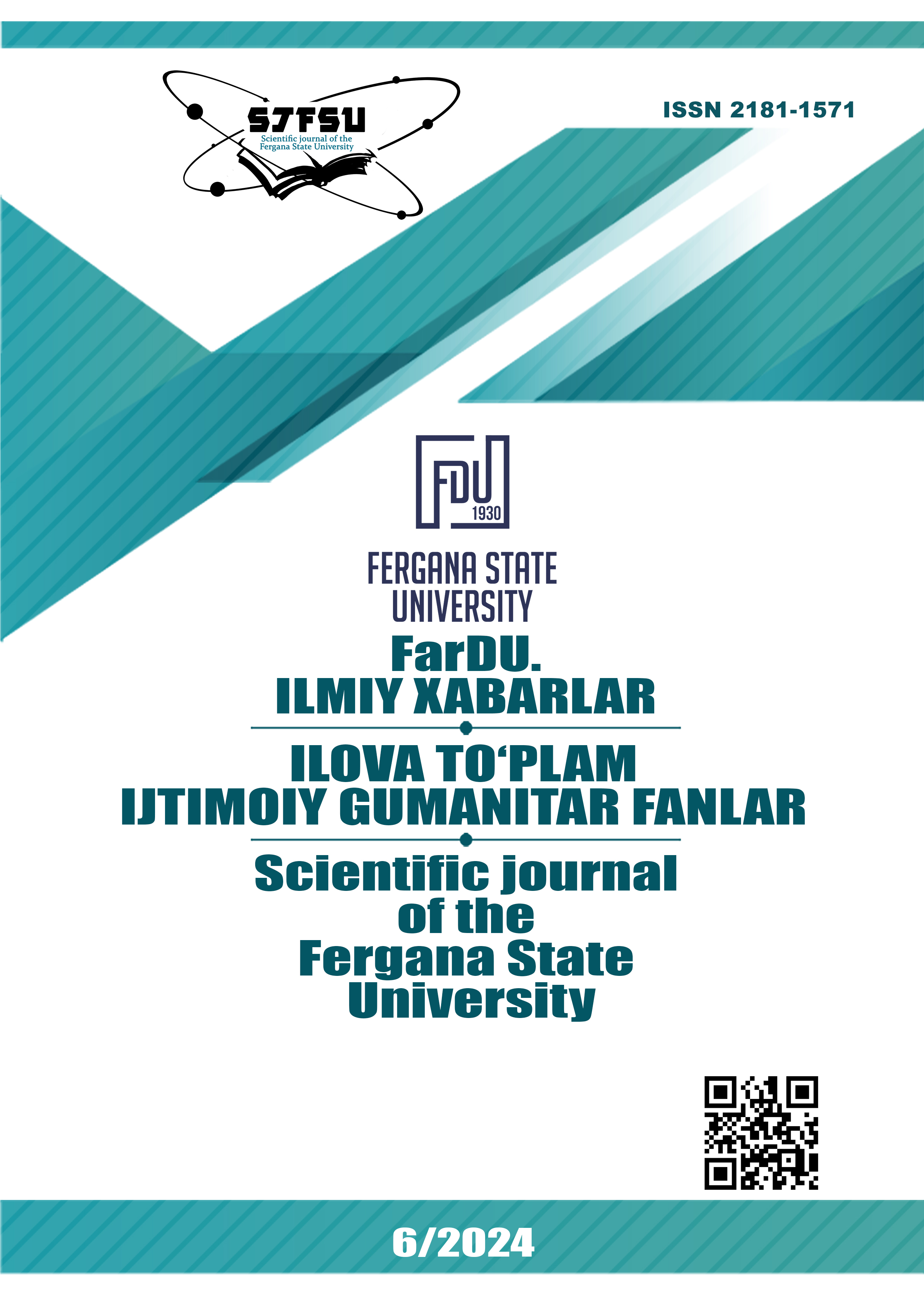6 DIFFERENT WAYS TO BRIDGE THE LANGUAGE GAP
Keywords:
linguistic gap, hermeneutic thinking, metaphorical renaming, coding, word creation, back-formation, polysemy, borrowed words, language development, terminology.Abstract
This article examines six methods of bridging linguistic gaps. Based on hermeneutic thinking, the internal and external characteristics of language are analyzed, and practical approaches to addressing gaps are presented. The study explores the use of borrowed words, metaphorical renaming, coding, word creation, back-formation, and polysemy as ways to fill existing gaps. The findings highlight the importance of linguistics in addressing linguistic gaps and emphasize factors contributing to the development of the Uzbek language.
References
Gadamer, H.-G. (2004). Truth and Method. Bloomsbury Academic, pp. 117-125.
https://azon.uz/content/views/bolosogun
Ф.Шодиев. Ҳозирги ўзбек тилида бир бўғинли сўзларнинг структур-семантик талқини ва деривацион хусусиятлари: Филол.фанл.номз....дисс.автореф. – Тошкент, 2008 – Б.10.
Murray, J. A. H. (1889). A New English Dictionary on Historical Principles (Vol. 1). Oxford University Press, Preface, pp. xix-xxi.
Fischer, R. (1999). Lexical Gaps and Their Implications in Linguistic Theory. Linguistic Press, pp. 45-58.
Downloads
Published
Issue
Section
License
Copyright (c) 2025 Scientific journal of the Fergana State University

This work is licensed under a Creative Commons Attribution-NonCommercial-NoDerivatives 4.0 International License.
How to Cite
Most read articles by the same author(s)
- , LACUNA-RELATED PHENOMENA IN A CULTURAL CONTEXT , Scientific journal of the Fergana State University: No. 5 (2023): FarDU ilmiy xabarlari jurnali (Aniq va tabiiy fanlar)
- , , , , , , SORPTION AND STUDY OF IONS OF Cu(II), Zn(II) AND Ni(II) IN SYNTHESISED SORBENT BASED ON UREA, FORMALDEHYDE AND DIPHENYLCARBAZONE , Scientific journal of the Fergana State University: No. 6 (2024): FarDU.Ilmiy xabarlar jurnali (Aniq va tabiiy fanlar)
- , SOME CONCEPTS ON THE DETERMINATION OF LINGUISTIC LACUNA , Scientific journal of the Fergana State University: No. 3 (2024): Scientific journal of the Fergana State University. Application set (Social humanities sciences)
- Latipov Sherzod Foziljon o‘g‘li, GRAMMATICAL LACUNAS AS MARKERS OF CULTURAL AND LINGUISTIC IDENTITY , Scientific journal of the Fergana State University: No. 3 (2024): Scientific journal of the Fergana State University. Application set (Social humanities sciences)
- , MANITORING OF PHYSICAL FITNESS AND FUNCTIONAL STATE OF THE ORGANISM OF ELEMENTARY STUDENTS IN THE GENERAL EDUCATIONAL SCHOOL SYSTEM , Scientific journal of the Fergana State University: No. 4 (2023): Scientific journal of the Fergana State University (Exact and natural sciences)
- , SOME THEORETICAL ISSUES IN THE DEVELOPMENT OF THE GASTROTOURISM SPHERE , Scientific journal of the Fergana State University: No. 6 (2023): FarDU ilmiy xabarlari jurnali (Ijtimoy gumanitar fanlar)
- , METHODOLOGY FOR DEVELOPING FLEXIBILITY IN MIDDLE SCHOOL GIRLS (GRADES 5–9) WITHIN THE FRAMEWORK OF DIFFERENTIATED PHYSICAL TRAINING , Scientific journal of the Fergana State University: No. 6 (2024): Scientific journal of the Fergana State University ADDITIONAL COLLECTION (Social humanities sciences)
- , THE ROLE AND SIGNIFICANCE OF THE TRADITIONAL DISHES OF THE JIZZAKH OASIS IN THE DEVELOPMENT STAGE OF GASTRO TOURISM (AS AN EXAMPLE OF FORISH DISTRICT) , Scientific journal of the Fergana State University: No. 6 (2024): Scientific journal of the Fergana State University (Social humanities sciences)
- Latipov Sherzod Foziljon o‘g‘li, UNVEILING THE SIGNIFICANCE OF LINGUISTIC LACUNA IN FOREIGN LANGUAGE TEACHING , Scientific journal of the Fergana State University: No. 3 (2024): Scientific journal of the Fergana State University. Application set (Social humanities sciences)

